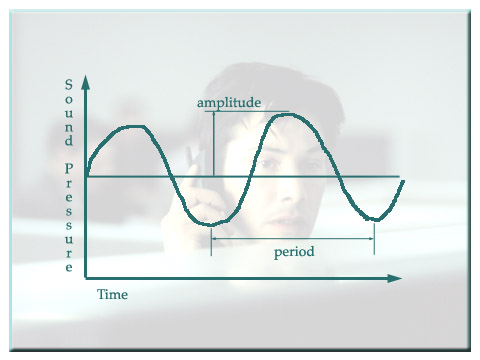back 2 basics...
(no, not kick hi hat and snare)
Technically, the definition of 'sound' is a pressure wave in an elastic
medium. This means that our pressure wave can be present in air, water, wood,
steel... many different solids as well as air (and liquid). One of the most
common units of measurement of sound is intensity, or the rate at which sound
energy is being transmitted into the medium. (low sound intensity would be something
like somebody clapping between movements, high sound intensity would be the
applause after Beethoven's 9th) The unit of intensity is the decibel,
or db. We use a logarithmic scale to measure these, as it is difficult
to understand the range of the decibel in linear terms.
|
Other units of measurement are the period and the amplitude of the wave.
As we see in the graphic, we have the graph of time versus sound pressure,
with our little wave traversing it. The amplitude is the highest value
the graph reaches before descending again, while the period is the amount
of time it takes for the wave to complete a full cycle.
Other terms of note for the diagram are compression, which is represented
by the parts of the graph in the positive region of sound pressure, and
rarefraction, which is represented by negative pressure.
Finally we have wavelength, which is the (distance traveled over one second)
divided by (frequency). Knowing this size of the wave is incredibly important
in designing rooms of all types.
|
|
The speed of sound, in fresh air, is 1130 feet per second. Other important
data of note is that sound power can be represented by the equation
I = W / (4*(pi)*d^2)
Where I = sound intensity (watt/(cm^2)) W = sound power (watts), d = distance
from sound source, (cm)
One should note that this is an inverse-square relationship between intensity
and distance.Thus if the sound is a certain intensity at at a particular distance,
if you go to twice that distance, the (perceived) sound intensity will be one
quarter of its original intensity.
Onward, to Materials...
